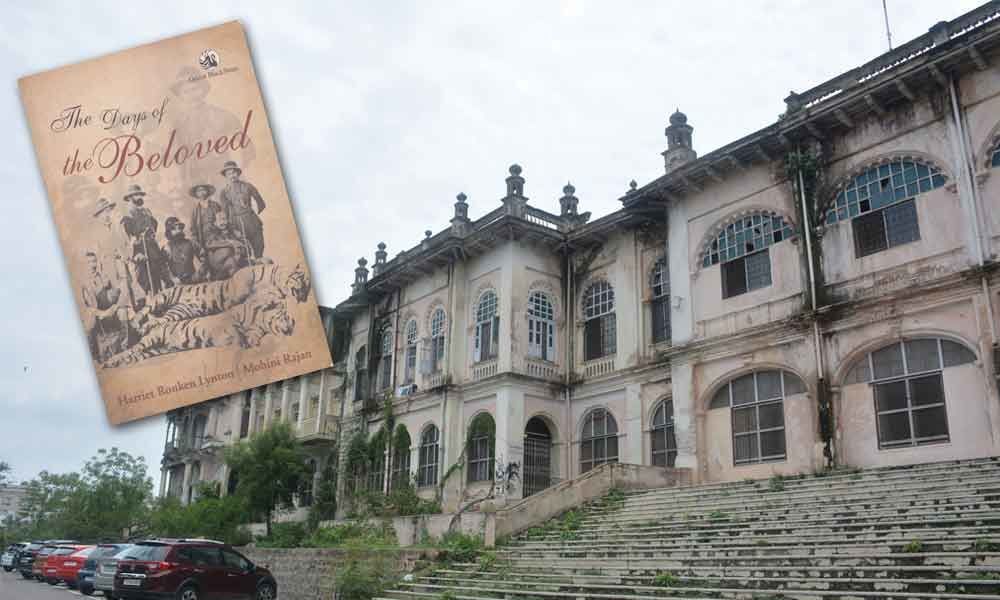An insiders look at life & times of Errum Manzil Nawab

Whatever is likely to be the fate of Errum Manzil palace in the days ahead, it surely was a landmark of that era.
"At four in the morning he (Fakhr ul Mulk Bahadur) rose and spent an hour at a vigorous workout with Indian clubs. To refresh him afterward, two quarts of milk all frothy and warm from the buffalo were brought in a silver bowl. With the milk he took two pills of opium, a practice he shared with Maharajah Kishen Pershad among many others. It was the 'aspirin' of the 1890s."
Hyderabad: Whatever is likely to be the fate of Errum Manzil palace in the days ahead, it surely was a landmark of that era.
In the book 'The Days of the Beloved' written by Harriet Ronken Lynton and Mohini Rajan, (originally published in 1974 by Orient BlackSwan) there are two whole chapters devoting considerable space to the lives of its inhabitants and their staff.
The authors have an enduring relationship with Hyderabad, the former having lived in the city for six years in the 1960s and a regular visitor since then.
The latter, the late Mohini Rajan, belonged to a Hyderabadi family and was the granddaughter of Raja Bahadur Venkatarama Reddy who was Kotwal to Osman Ali Khan Nizam VII. With such a pedigree and fine attention to detail, the authors have brought to life the enigmatic style with which the Nizami noble, Fakhr ul Mulk Bahadur and his family lived in the palace having more than 600 rooms employing the services of more than 500-odd retainers.
As the book elucidates: 'Whatever the motivation for constructing it, Iram Munzil was one of Hyderabad's great palaces, set in spacious grounds enclosed by miles and miles of compound wall.
Inside was nearly everything needed for a pleasant life, including formal gardens, bridle paths, picnic grounds beside a pleasant pond for boating, tennis courts and two full-sized polo grounds.
Near the dairy, which had twenty or thirty animals, lived the dairymen and their families, while grooms and troops had quarters not far from the stables. There were riding horses, carriage horses and polo ponies and vehicles in great variety.
The lofts held enormous quantities of fodder for the animals, while huge stacks of hay from the jagir rose yearly between dairy and stables.
Detailing about the duties of the staff on the noble's payrolls, the book adds: "Whole families were employed on particular jobs: for instance, dozens of gardeners were assisted by their wives in keeping the garden sparkling and the gravel paths swept and smooth.
Some of the wives were employed as sweepers inside the palace. As flush toilets had not been introduced, scavengers and their families had quarters at some distance from the others."
Rather unsurprisingly, suiting the regal lifestyle of the noble families, the authors write that Fakhr ul Mulk's European wardrobe was sent to Paris for laundering or cleaning, aside from his socks and handkerchiefs, which were discarded after being used once.
"Happily the Nawab was not inconvenienced by the length of time required for shipment to and fro: the Nizam once observed that Fakhr ul Mulk possessed a change of clothing for every degree marked on the thermometer, surely an underestimation" they note.
Among other things, described in great detail about the palace is also the routine of the Nawab who began his day early and actively. As the book informs: "At four in the morning he rose and spent an hour at a vigorous workout with Indian clubs.
To refresh him afterward, two quarts of milk all frothy and warm from the buffalo were brought in a silver bowl. With the milk he took two pills of opium, a practice he shared with Maharajah Kishen Pershad among many others. It was the 'aspirin' of the 1890s."
Of course, the opium was prepared by one special servant. "It was ground with sugar candy, almonds and ghee, shaped into pills, wrapped in silver foil and placed in a small gold box which had a matching pair of gold tongs" add the authors, whose diligent efforts come across effortlessly with such descriptions. A fascinating glimpse into a bygone period, indeed!



















